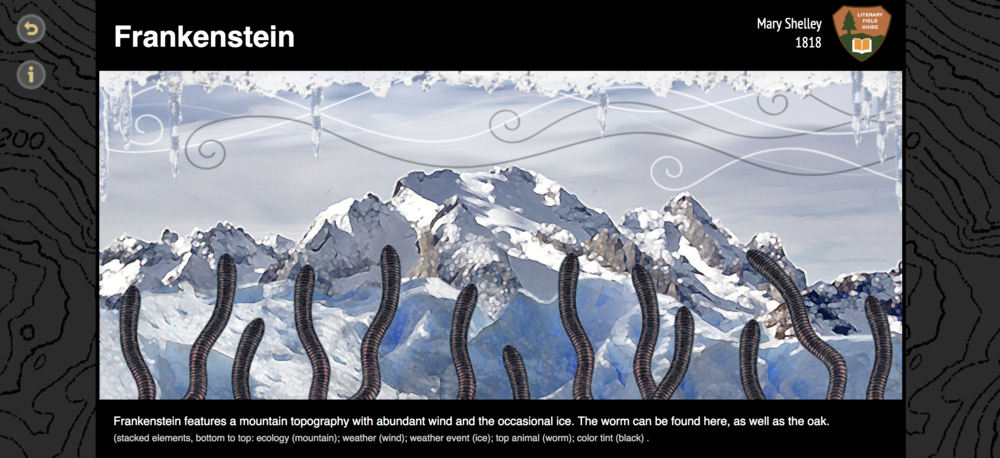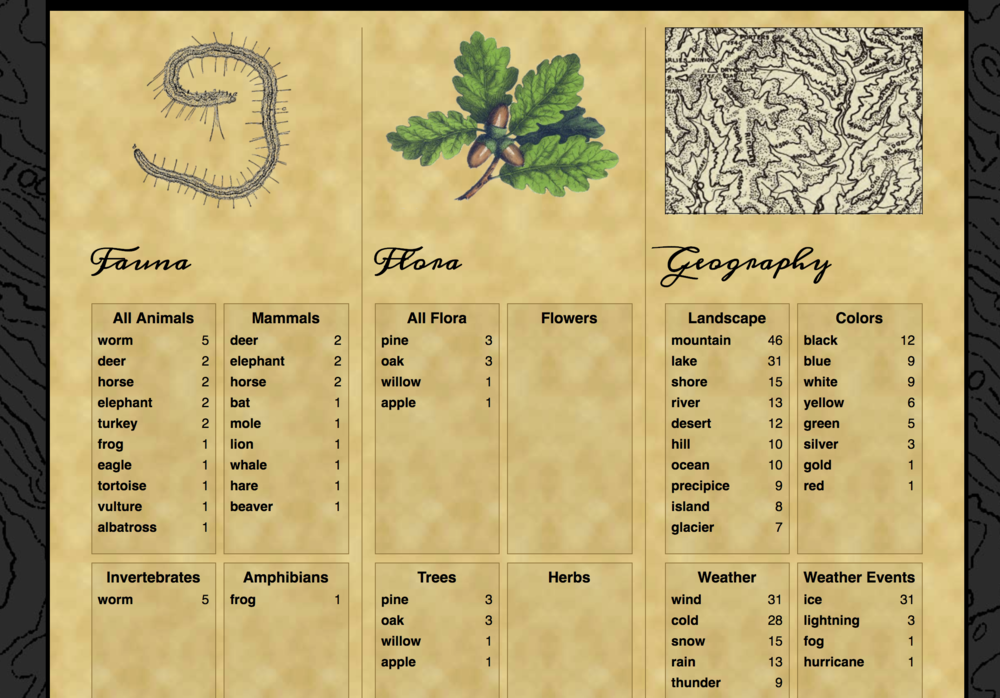Literary field guide
Lisa Swanstrom and Scott SvatosOnline, 2018
“A Field Guide to Artificial Nature(s)” highlights or makes visible the interlocking infrastructures of built, expressive, and natural environments. It also concerns a kind of speculation, or forecast, about how literary texts operate—how the landscapes and ecologies within them tend to function as infrastructure. Its focus, however, is not real-world spaces but literary ecologies, i.e., the expression of natural environments within literary texts, which are of course always already remediations of real-world ecologies.
Coded in Python within the Flask micro web framework, the “Field Guide” analyzes any .txt file and provides a breakdown of the text’s weather, climate, geographic features, flora, and fauna, in essence bringing relationships between land, text, and environment into relief. For example—and in honor of its bicentennial—if we upload Mary Shelley’s Frankenstein to the “Field Guide,” we receive a visualization of the text’s literary ecology, designed to look like a brochure from the National Park Service:

Scrolling down, we see a detailed summary of the text’s plant life, animal life, geography, weather, weather events, and climate:

The “Field Guide to Artificial Nature(s)” debuted at the Ideal Spaces’ Work Group Symposium in Venice, as a part of the 2018 Architecture Biennale. An early version of the “Field Guide” is the “Literary Forecaster,” which focuses on a text’s weather; this is also publicly available online (www.literaryforecast.net).
